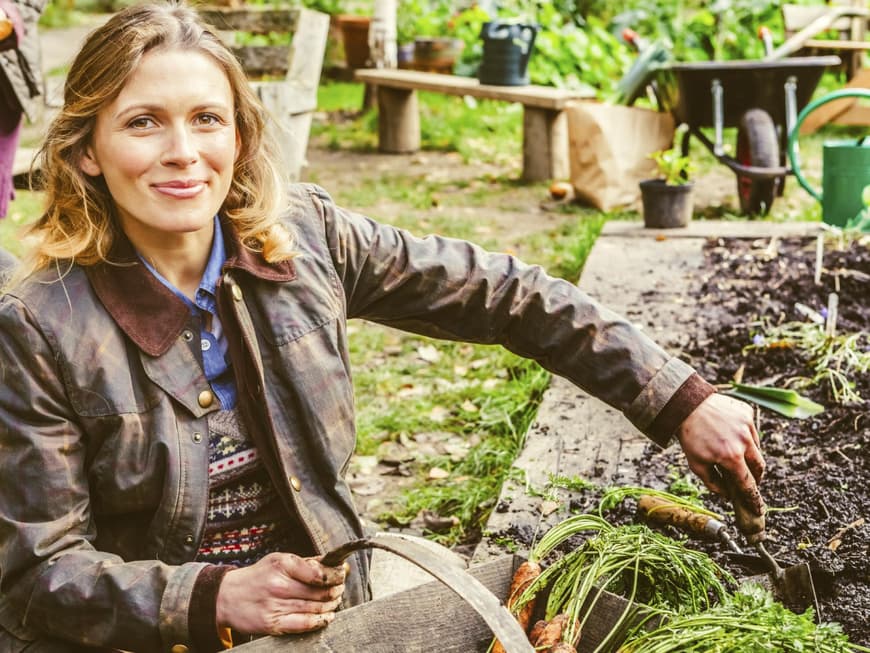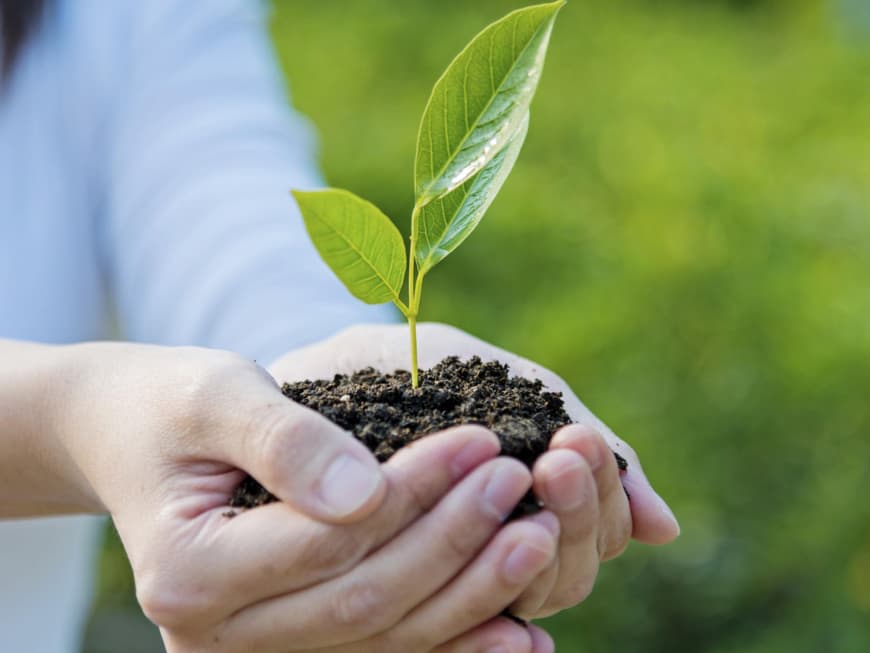Growing vegetables for beginners
Nutritious soil: The better the soil, the more abundant the harvest will be if you grow your own vegetables. A special vegetable substrate is suitable for containers. However, you can also cut open the bag of soil and plant seedlings directly into it. To protect the environment, avoid peat soil if possible.
Sufficient sun: If you grow vegetables on the balcony, remember that they need plenty of light, so ideally a south-facing balcony - preferably sheltered from the wind.
The right containers: If you only have limited space, hanging baskets, flower boxes on railings or light plant bags are a good idea. A drainage layer and drainage holes are important to prevent waterlogging. Line baskets or boxes with pond liner beforehand.
What thrives best in a pot
Vegetables: Lettuce, preferably lettuce, summer carrots with a short ripening period, radishes, beans, peas, onions, spinach, chard, zucchinis, cucumbers, tomatoes, kohlrabi, even pumpkins.
Fruit: Strawberries, currants as standard trees and all the fruit trees that are available as columnar fruit.
Try something new: Don't be afraid to plant flowers next to vegetables. In our balcony box above, hussar buttons, dwarf zinnias, a mini eggplant and Swiss chard thrive side by side.
Grow your own vegetables: Seeds or seedlings?
A packet of seeds, from which ten or even more plants sprout, costs about the same as a pre-grown young plant. In addition to the price advantage, the choice of seeds is greater than with seedlings. Disadvantage: Pre-grown vegetables have to be planted in individual pots when they are big enough. This requires space, especially as they should only be planted outdoors after the Ice Saints (from May 11 to 15).
Nurture and care
Watering: If you grow vegetables on the balcony, water pots until the water runs out at the bottom. Only direct the water jet at the root area, not at the leaves. They can burn, increasing the risk of infection. Water again as soon as the top layer of soil has dried out.
Fertilize: When you buy young plants, they are fertilized for the first four to six weeks. Later on, they need additional nutrients. How much depends mainly on their nitrogen requirements. Lettuce and beans are quite frugal, whereas pumpkin plants, tomatoes and peppers need a lot.
Mulching: Add a 2-5 cm thick layer of chopped bark or wood fibers on top of the soil. Protects against weeds and drying out.
Microgreens: Harvesting without effort
For all those of us who don't have a balcony or green space, or who don't have green fingers, there are the so-called microgreens. Thanks to them, we can harvest home-grown vegetables anywhere without any effort.
Microgreens is actually just the English term for seedlings and is often used for a super uncomplicated food trend: And that is indoor gardening. Microgreens, typically vegetables such as broccoli and radishes that are harvested very young, can be used very well for this. The "baby vegetables" are considered superfoods because they have a higher nutrient density than their full-grown counterparts. They can be grown and harvested in small pots in the home to save space.
The Heimgart label, for example, offers a microgreen starter kit for around 35 euros. It includes two certified organic seed pads with the corresponding porcelain bowl and insert in which the vegetables can be grown. The special thing about this mini-garden is that the vegetables do not need soil or watering due to the nature of the pot. They can be harvested after about a week. Any of us can really do that!



